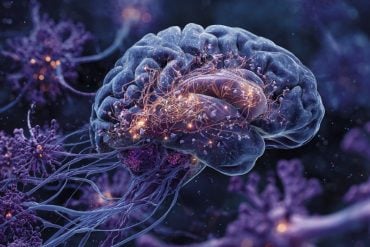Researchers from the CHUM Research Centre (CRCHUM) have identified a new gene that predisposes people to both autism and epilepsy.
Led by the neurologist Dr. Patrick Cossette, the research team found a severe mutation of the synapsin gene (SYN1) in all members of a large French-Canadian family suffering from epilepsy, including individuals also suffering from autism. This study also includes an analysis of two cohorts of individuals from Quebec, which made it possible to identify other mutations in the SYN1 gene among 1% and 3.5% of those suffering respectively from autism and epilepsy, while several carriers of the SYN1 mutation displayed symptoms of both disorders.
“The results show for the first time the role of the SYN1 gene in autism, in addition to epilepsy, and strengthen the hypothesis that a deregulation of the function of synapse because of this mutation is the cause of both diseases,” notes Cossette, who is also a professor with the Faculty of Medicine at the Université de Montréal.
He adds that “until now, no other genetic study of humans has made this demonstration.”
The different forms of autism are often genetic in origin and nearly a third of people with autism also suffer from epilepsy. The reason for this comorbidity is unknown. The synapsin gene plays are crucial role in the development of the membrane surrounding neurotransmitters, also referred to as synaptic vesicles. These neurotransmitters ensure communication between neurons. Although mutations in other genes involved in the development of synapses (the functional junction between two neurons) have previously been identified, this mechanism has never been proved in epilepsy in humans until the present study.
Notes about this autism and epilepsy research
The results of the present study were published in the latest online edition of Human Molecular Genetics (www.hmg.oxfordjournals.org/search?submit=yes&fulltext=SYN1+loss). They provide the key to a common cause of epilepsy and autism and will make it possible to gain a better understanding of the pathophysiology of these devastating diseases that seriously perturb brain development. They will also contribute to the development of new treatment strategies.
Facts and figures relating to autism and epilepsy in Canada
Invasive development disorders, also called the autism spectrum, include five diagnoses: autism, the most well known; RETT syndrome; childhood disintegrative disorder; Asperger syndrome; and unspecified pervasive developmental disorder. It is estimated that 60 to 70 people (including 10 children) out of every 10,000 people are affected by pervasive development disorders in Canada.
Epilepsy affects around 85 out 10,000 people in Canada. There are several kinds of epileptic seizures and syndromes.
About the study
SYN1 loss-of-function mutations in ASD and partial epilepsy cause impaired synaptic function.
Anna Fassio, Lysanne Patry, Sonia Congia, Franco Onofi, Amélie Piton, Julie Gauthier, Davide Pozzi, Mirko Messa, Enrico Defranci, Manuela Fadda, Anna Corradi, Pietro Baldelli, Line Lapointe, Judith St-Onge, Caroline Meloche, Laurent Mottron, Flavia Valtorta, Dang Khoa Nguyen, Guy A. Rouleau, Fabio Benfenati. Human Molecular Genetics.
Contact: Nathalie Forgue – Communication Advisor – Centre hospitalier de l’Université de Montréal
Source: Centre hospitalier de l’Université de Montréal Press Release
Image Source: Neuroscience News









